Drug-Receptor Interactions
Definition: Receptor = Any macromolecule to which a drug binds to exert its effect
- Concerned specifically with signalling between and within cells
- Cell activity changes once stimulated
- Receptor must recognize the molecule and action has to happen

Receptors – four main types
1. Agonist (ligand) - gated
- Ion channels form a central pore e.g. GABA receptor
2. G-protein coupled receptors.
- Linked to responses by second messengers
3. Nuclear receptors
- present in the cell nucleus regulating protein synthesis – e.g. steroid and thyroid hormones
4. Kinase-linked receptors
- surface receptors for insulin and growth factor
1. Agonist (ligand)-gated ion channels
A group of transmembrane ion channel proteins which open to allow ions such as Na+ K+, Ca2+, or Cl- to pass through the membrane in response to the binding of a ligand such as a neurotransmitter.
2. G-protein-coupled receptors
These receptors are linked to their responses by regulatory Guanosine Triphosphate (GTP)-binding proteins or G proteins
- This complex induces conformational change in the G protein

3. Second messengers
There are process intermediates between binding on receptor and effect. Example -adrenoreceptors:
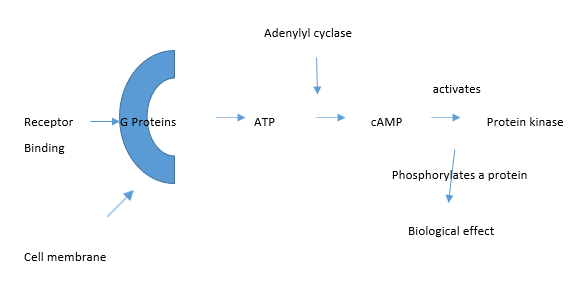
4. Nuclear receptors
Nuclear receptors are a class of proteins found within cells that are responsible for sensing steroid and thyroid hormones and certain other molecules
Properties of drugs
Affinity: The chemical forces that cause the drug to associate with the receptor.
- It describes the binding of the drug to the receptor. Affinity describes both the ‘goodness’ of fit of the drug for the receptor and also how tightly the drug is bound to the receptor.
Efficacy: The extent of functional change imparted to a receptor upon binding of a drug.
- Describes the ability of a drug once bound to a receptor, to activate that receptor and produce a response. Full agonists have high efficacy and can produce a maximum response.
Properties of a biological system
Potency: Dose of drug necessary to produce a specified effect.
- Dependent upon receptor density, efficiency of the stimulus-response mechanism, affinity and efficacy. This is measured by the concentration required to produce a given level of effect. More potent drugs produce their effects at lower doses
Classification of a drug based on drug-receptor interactions:
Agonist: Drug that binds to receptors and initiates a cellular response; has affinity and efficacy. Agonists promote the active state.
Antagonist: Drug that binds to receptors but cannot initiate a cellular response, but prevent agonists from producing a response; affinity, but no efficacy.
Partial agonists: Drug that, no matter how high the dose, cannot produce a full response.
Inverse agonist: Drug that binds to a receptor to produce an effect opposite to that of an agonist. Stabilizes receptors in the inactive state.
Graded dose-response curves – Concepts to remember
Threshold: Dose that produces a just-noticeable effect.
ED50: Dose that produces a 50% of maximum response.
Ceiling: Lowest dose that produces a maximal effect.
Affinity and specificity
- The interaction between a drug and the binding site the receptor depends on the degree of fit of the two molecules – ligand and receptor.
- The closer the fit and the greater the number of bonds (usually non-covalent) the stronger the attractive forces and the higher the affinity of the drug for the receptor.
- The ability of a drug to bind to one specific receptor is called the specificity
- No drug is truly specific but many have relatively selective action on one type of receptor
The affinity of a drug for a receptor will depend on the strength & number of chemical bonds
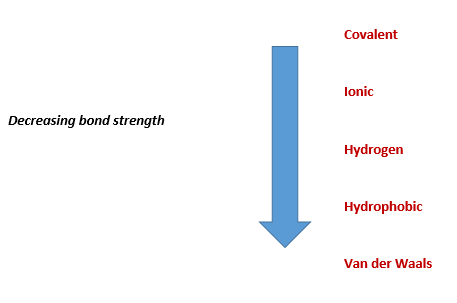
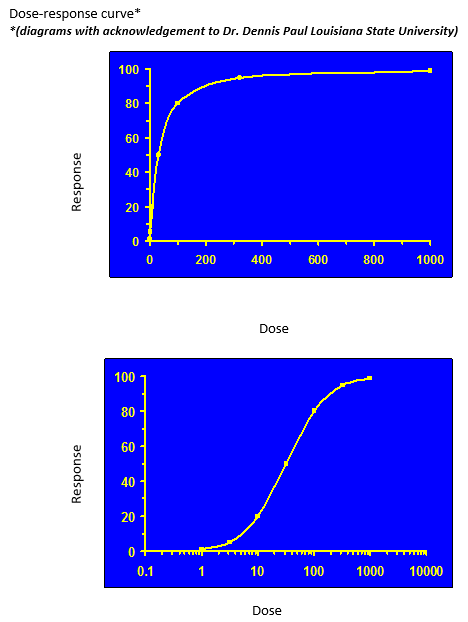
Agonist
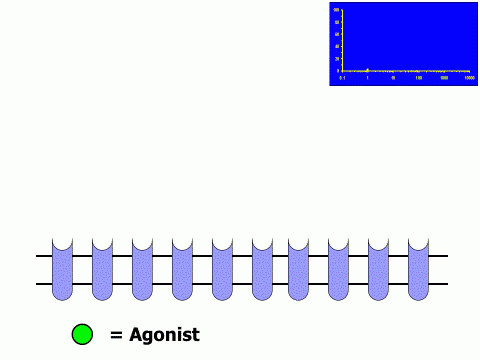
Antagonist
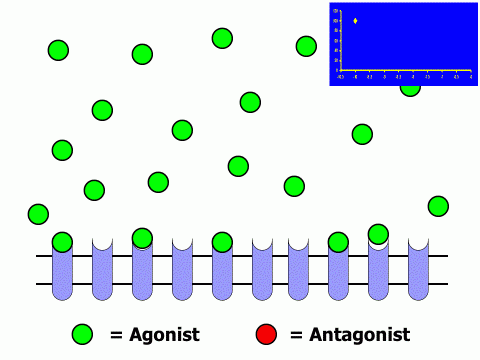 sp;
sp;
Copyright eBook 2019, University of Leeds, Leeds Institute of Medical Education.